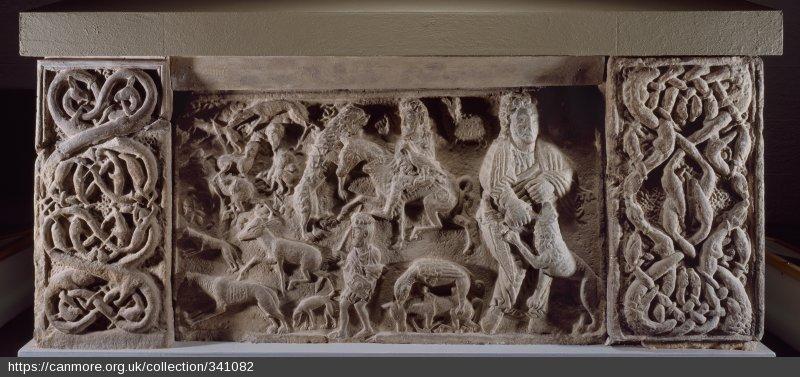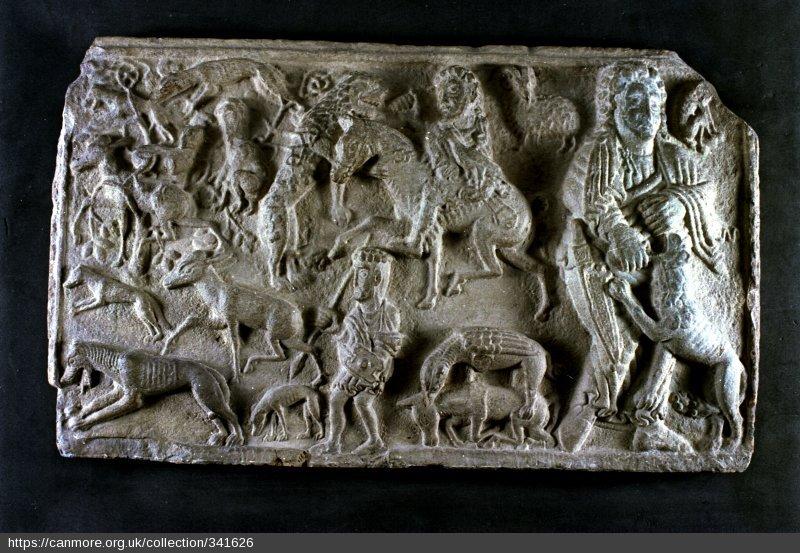Try Amazon Audible Premium Plus and Get Up to Two Free Audiobooks

Amazon Audible Gift Memberships
Saint Andrews Sarcophagus, Pictish, second half of the 8th century, St Andrew's Cathedral, Scotland

Source: Royal Commission on the Ancient and Historical Monuments of Scotland

A larger image of the front panel of the Saint Andrews Sarcophagus.
Source: Royal Commission on the Ancient and Historical Monuments of Scotland
The Saint Andrews Sarcophagus is a Pictish monument dating from the second half of the 8th century.
The sarcophagus was recovered beginning in 1833 during excavations by St Andrew's Cathedral, but it was not until 1922 that the surviving components were reunited.
The sarcophagus is currently on display at the Cathedral museum in St Andrews, close to the site of its discovery.
Description
As originally constructed the sarcophagus would have comprised two side panels, two end panels, four corner pieces and a roof slab.
The roof slab is entirely missing, as are most of one side and one end panel and a corner piece so that the extant sarcophagus is essentially L-shaped.
The external dimensions of the sarcophagus are 177 cm by 90 cm and a height of 70 cm. The stone used is a local sandstone.
The surviving side panel shows, from right to left, a figure breaking the jaws of a lion, a mounted hunter with his sword raised to strike a leaping lion,
and hunter on foot, armed with a spear and assisted by a hunting dog, about to attack a wolf.
Although it is not certain that the first two figures represent the same person, 19th century illustrations depict them as if they are.
The surviving end panel is much simpler, essentially a cross with four small panels between the arms. The fragments of the missing end panel are similar,
but not identical, to the surviving one.
Previous: Benvie Stone with two Pictish horsemen, Benvie, Scotland
Next: Papil Stone with bird-men with hatchets, Burra, Shetland, Scotland, 8th-9th centuries
More Picts on Pictish Stones
A Pictish Infantryman in Armies of the Dark Ages 600-1066 by Ian Heath, with a lobed shield.


